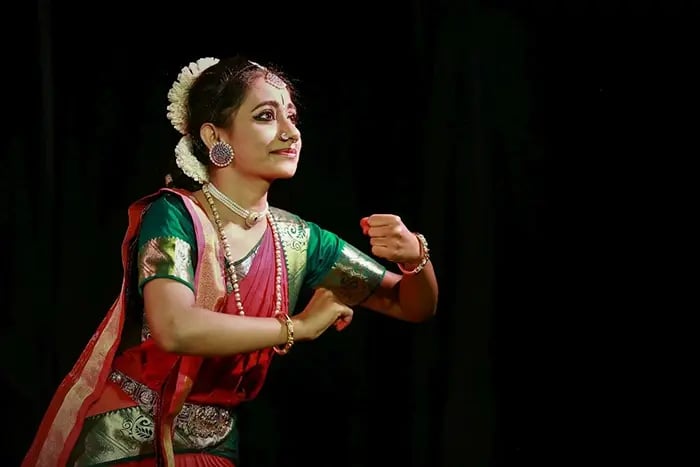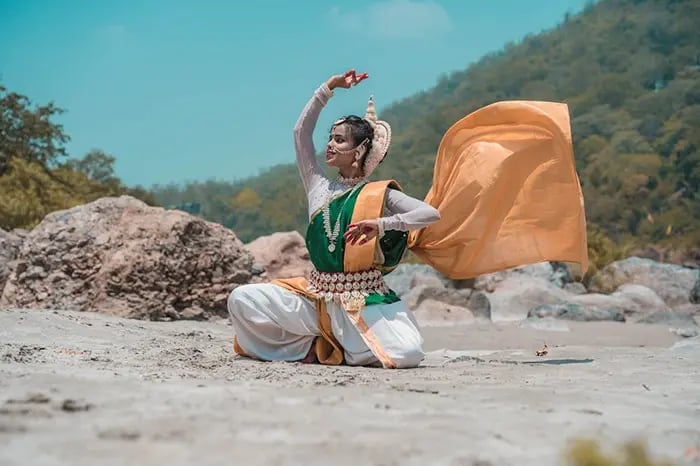- Kathak
- Bharatanatyam
- Mohiniyattam
- Kuchipudi
- Odissi
- Manipuri
Introduction
In most Indian homes, music and dance are pretty much part of festivities and traditions. With people dancing at the most festive gatherings in the home and cultural programs at schools, the rhythm of traditional dance often lightens up the atmosphere. All these performances also have enough health benefits. Classical dance forms like Kathak, Bharatanatyam, and others testify to the rich heritage of India and are equally superb exercises for the body. Those who want to be entertained as well as keep their weight in check will be interested in knowing that these dances may just be classics that are sweeping.
Different dance forms and their benefits
Kathak
Kathak is a classical kind of Indian dance which is considered to be born in the north; it has very intense footwork and whirls along with very nice gestures. Some sort of small bells on the ankles, called ghungroos, are also worn by the dancers to produce rhythm through their foot movements. High physical stamina and precision are required in practicing Kathak.
Benefits
Cardiovascular Health: Fast footwork increases heart rate, which is beneficial for increasing cardiovascular endurance.
Muscle Tone: Continuous movement tones the muscle structure of the legs, core, and arms.
Flexibility/Equilibrium: Intricate spinning and posturing improves flexibility and balance.
Brain Activity: Memorization of the intricate steps adds to memory and mental sharpness.
Bharatanatyam

Bharatanatyam is one of India's oldest classical dance forms, originating in Tamil Nadu. It consists of very intricate footwork, hand movements, and facial expressions used in the narration of stories from Hindu mythology. The dance form is performed in a fixed stance of the lower body known as the Aramandi.
Benefits
Lower body strength: The Aramandi prepares strength in the thighs, calves, and glutes.
Posture and core strength: The straight posture emphasized in the dance builds strong core muscles and induces spinal alignment.
Coordination: Hand-eye and foot movements come in sync to help bring about coordination of the entire body.
Mental Focus: The storytelling nature keeps one concentrated with a clear focus of mind on the dance.
Mohiniyattam
Mohiniyattam hails from Kerala and is extremely graceful and lyric in nature. The dance form is usually performed by females. The swaying of the body is noticeable with light footwork and emotive gesture of the hand is involved in this dance form.
Benefits
Grace and Flexibility: The undulating movements provide a flow to the entire body's flexibility and grace.
Joint Mobility: The soft, measured footwork increases joint mobility, particularly the hips and shoulders.
Breath Control: Slow movements of the dance help take control of the breathing, thus encouraging sound lung capacity
Stress Relief: due to the calm and tender movements, one can reduce psychological stress and anxiety
Kuchipudi
Originally from Andhra Pradesh, Kuchipudi is a combination of pure dance and pure play. It has vigorous movements, fine footwork, and storytelling; it might have narrative dance in which the performer may need to speak or sing
Benefits
Cardiovascular Fitness: It gives very good cardio because of the variety of dynamic movements involved.
Strength and Agility: The parts where the dancer jumps and spins vigorously give a physical boost to strength and agility.
Coordination and Balance: It helps improve coordination and balance because dance utilizes combinations of activities of dance and acting.
Vocal Exercise: Speaking or singing while one dances encourages vocal exercise in terms of strength and control of vocals.
Odissi

Odissi, practiced in Odisha, is one of the oldest surviving dance forms in India. Comprising fluid upper body movements, intricate footwork, and emotive face gestures, this dance form usually reflects stories of Lord Jagannath and other deities.
Benefits
Flexibility and Grace: Flexibility and grace in upper body movement can be improved.
Muscle Endurance: Practice of postures increases muscle endurance in parts, mostly in the lower limbs, body pain.
Increase in concentration: The need to remember the steps in the correct order while maintaining a certain pace of movement helps increase concentration
Posture Improvement: The focus on maintaining a certain posture helps in building a good core and back.
Imparts Mental Discipline: The storytelling and expressive aspect of the system calls for mental discipline while engaging the emotions
Manipuri
From the northeastern state of Manipur, the dance is accompanied by gentle and flowing movements. It is mainly a performance associated with devotional worship but reflects the sense of folk
Benefits
Lightness and Agility: The light and fluid movements improve overall agility and lightness of the body.
Flexibility: The gentle dance form helps with flexibility, especially in the spine and joints.
Stress Reduction: This calm, devotional dance reduces stress.
Spiritual Connection: Its devotional aspects are meant to bring about spiritual wellness and inner peace.
Deepali Verma is a senior food and wellness writer with over a decade of experience in top media houses, crafting engaging narratives. She is a professional home baker and loves exploring food from every corner of the world to reading cookbooks. She believes a healthy lifestyle is a combination of mental, spiritual and physical fitness. Her goal always remains to keep moving, eating seasonal and practicing gratitude.
The views expressed are that of the expert alone.
The information provided in this content is for informational purposes only and should not be considered a substitute for professional medical advice, diagnosis, or treatment. Always seek the advice of your physician or another qualified healthcare provider before making any significant changes to your diet, exercise, or medication routines.
References










